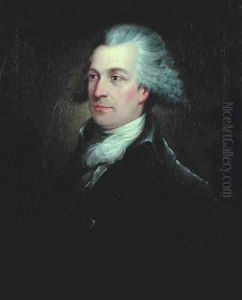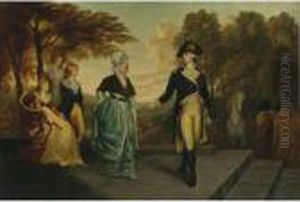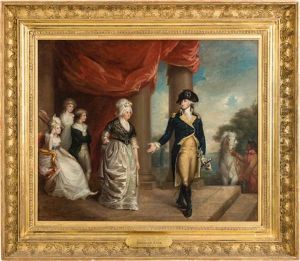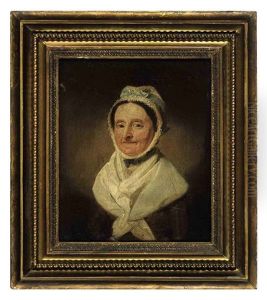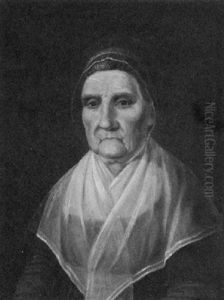Jeremiah Paul Paintings
Jeremiah Paul, Jr. was an American painter, born in 1775 in Philadelphia, Pennsylvania. He is recognized as one of the early American painters who contributed to the portrait and historical genres in the infancy of the United States. Not much is known about his early life and training, but it is believed that he was self-taught or had informal training.
Paul's active years as an artist began in the late 18th century, and he quickly became known for his portraits. He worked primarily in Philadelphia, which was a cultural hub at the time. His contributions to art during this period were significant due to the lack of formally trained American artists. Paul's work provided a visual documentation of notable figures of his time.
In addition to portraits, Jeremiah Paul also produced a few historical works. One of his most famous paintings is a depiction of the death of General Hugh Mercer at the Battle of Princeton during the American Revolutionary War. This work exemplifies the early American tradition of commemorating national heroes and pivotal events through art, contributing to the nascent nation's historical narrative.
Paul's style was characteristic of the early American portrait tradition, which was heavily influenced by European standards but also had a distinctive American flavor. His technique was straightforward, with a focus on capturing the likeness and character of his subjects.
Jeremiah Paul's career was cut short when he died in 1820. Despite his early death, Paul's work remains an important part of the history of American art. He is remembered for his role in shaping the early artistic identity of the United States and for his portraits that have preserved the likenesses of many of his contemporaries for posterity.
